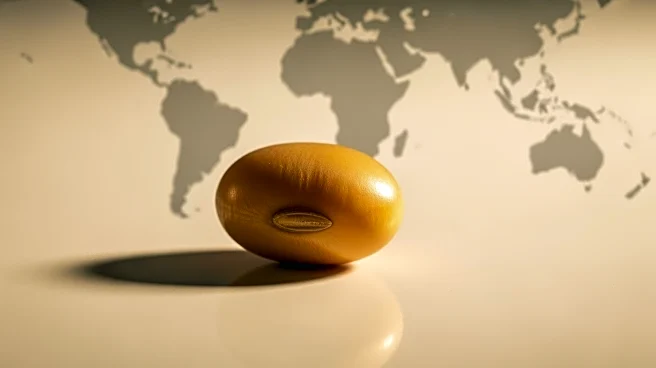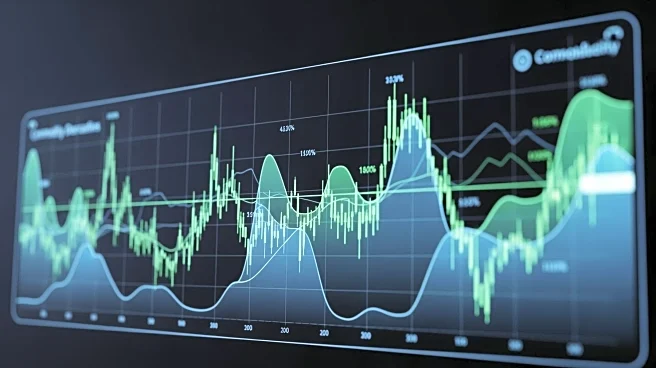What's Happening?
Feeder cattle prices have reached new contract highs, driven by tight supplies, low feed prices, strong consumer demand, and rising deferred live cattle futures. Since 2020, feeder cattle prices have been
trending higher, with recent futures reaching over $381 per hundredweight. The market activity is described as 'red hot,' with deferred live cattle prices also accelerating. The trend suggests that feeders are leading the cattle complex to higher prices, raising concerns about risk management in the industry.
Why It's Important?
The surge in feeder cattle prices presents significant risks for those buying cattle for feed yards. Input prices, particularly feed, could rise, and live cattle prices could drop, making risk management crucial. The unprecedented feeder prices create a volatile environment in the live cattle market, where strategic planning and preparation are essential to avoid potential losses. The situation emphasizes the need for effective risk management strategies to ensure the sustainability of operations in the livestock industry.
What's Next?
Industry stakeholders are advised to plan and prepare for potential market reversals. Commodity markets can trend directionally for extended periods, but a reversal could be sudden and impactful. Traders may aggressively sell positions, leading to a bearish market. It is crucial for stakeholders to consider all available marketing tools and work with professionals to develop strategies suited to their operations.
Beyond the Headlines
The rising cattle prices and associated risks highlight the dynamic nature of commodity markets and the importance of strategic decision-making. The situation underscores the need for comprehensive risk management practices and the potential consequences of market volatility on the livestock industry.











